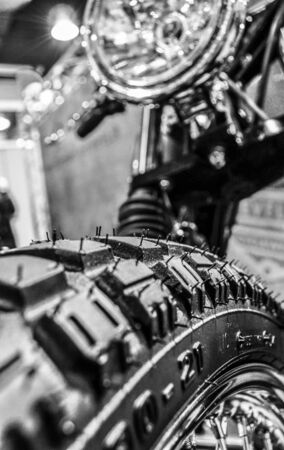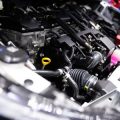1. Introduction to Suspension Geometry
Suspension geometry plays a critical role in how your car handles, steers, and responds to the road. It refers to the arrangement of suspension components, including control arms, linkages, and steering knuckles, that determine how the wheels move in relation to the chassis. Understanding suspension geometry helps you appreciate why some cars feel more stable while others are more agile.
Key Elements of Suspension Geometry
Several factors influence suspension geometry, each affecting vehicle dynamics differently. Below is a breakdown of the most important suspension angles and their functions:
| Term | Definition | Effect on Handling |
|---|---|---|
| Camber | The tilt of the wheels inward or outward when viewed from the front. | Negative camber improves cornering grip, while excessive camber can cause uneven tire wear. |
| Caster | The angle of the steering axis when viewed from the side. | More caster enhances straight-line stability and improves steering feel. |
| Toe | The direction the wheels point relative to the centerline. | Toe-in increases stability, while toe-out sharpens turn-in response. |
| Roll Center | The imaginary point around which the car rolls during cornering. | A lower roll center increases body roll, while a higher one improves stability. |
Why Suspension Geometry Matters
The way suspension components interact with each other affects everything from ride comfort to high-speed stability. A well-tuned suspension geometry ensures predictable handling, reducing the chances of understeer or oversteer. Automakers and performance tuners carefully adjust these angles to optimize control, enhance cornering, and improve safety.
Balancing Comfort and Performance
A softer suspension setup prioritizes ride comfort for daily driving, while a more aggressive geometry is suited for high-performance driving. Manufacturers must strike a balance to meet driver expectations, whether for a smooth ride or track-ready precision.
Real-World Impact
Everyday drivers may not always notice the intricacies of suspension geometry, but small adjustments can make a big difference. Whether its a factory-tuned car or a customized modification, understanding suspension angles helps in making informed decisions about vehicle handling and performance.
2. Key Suspension Angles and Their Effects
Suspension geometry plays a huge role in how your car handles, and a big part of that comes down to key suspension angles. These angles determine how your tires contact the road, affect stability, and influence steering response. Let’s break down some of the most important ones: camber, caster, and toe.
Camber: The Tilt of the Wheels
Camber refers to the inward or outward tilt of the wheels when viewed from the front of the car. It influences cornering grip and tire wear.
| Camber Type | Effect |
|---|---|
| Negative Camber | Increases cornering grip by keeping more tire surface in contact with the road. However, excessive negative camber can cause uneven tire wear. |
| Positive Camber | Less common in performance applications but can help stability in off-road or heavy-load situations. Too much positive camber reduces cornering grip. |
Caster: Steering and Stability
Caster is the angle of the steering axis when viewed from the side of the car. It affects steering feel, stability, and self-centering behavior.
| Caster Type | Effect |
|---|---|
| Positive Caster | Improves high-speed stability and enhances steering return to center. Most modern vehicles use a degree of positive caster. |
| Negative Caster | Makes steering easier at low speeds but can reduce stability at higher speeds. Rare in modern performance-oriented cars. |
Toe: The Direction of the Wheels
Toe describes whether the front edges of the tires point inward (toe-in) or outward (toe-out) when viewed from above.
| Toe Type | Effect |
|---|---|
| Toe-In | Enhances stability, especially at high speeds, but can make turn-in response feel slower. |
| Toe-Out | Improves cornering response, making the car more agile, but can make straight-line stability less predictable. |
Other Important Suspension Angles
Kingpin Inclination
Kingpin inclination is the tilt of the steering axis viewed from the front. It works with caster to improve stability and steering feel.
Scrub Radius
The scrub radius is how far the tire’s contact patch is from the steering axis. A larger scrub radius can make steering heavier but offers better feel.
Understanding these key suspension angles helps you fine-tune your cars handling for better performance, whether youre aiming for better cornering, stability, or overall comfort on the road. Every small adjustment can make a big difference in how your car responds to your inputs.
![]()
3. How Suspension Geometry Affects Performance
Suspension geometry plays a crucial role in how a car handles different driving conditions. By understanding how changes in geometry affect grip, cornering, braking, and ride comfort, you can better appreciate the importance of a well-tuned suspension system.
Grip
Grip is the friction between the tires and the road surface. The suspension geometry directly impacts how the tires maintain contact with the road. Key factors influencing grip include:
- Camber Angle: Negative camber helps increase grip during cornering by keeping more of the tire in contact with the road.
- Toe Settings: Toe-in improves stability in a straight line, while toe-out enhances turn-in response.
- Suspension Stiffness: Softer suspensions can help maintain tire contact over bumps, improving overall grip.
Cornering
When a car takes a turn, various suspension settings determine how well it holds the road. Some key factors affecting cornering include:
| Suspension Factor | Effect on Cornering |
|---|---|
| Camber | More negative camber increases grip in turns. |
| Caster | More positive caster improves stability and turn-in feel. |
| Roll Center Height | A lower roll center reduces body roll but may affect responsiveness. |
Braking
Suspension geometry affects braking efficiency by influencing weight transfer and tire contact. Key elements include:
- Anti-Dive Geometry: Reduces front-end dive under heavy braking, keeping the car stable.
- Toe Alignment: Proper toe settings prevent instability during sudden braking.
- Weight Distribution: Ensures even braking force, reducing the risk of wheel lockup.
Ride Comfort
While performance tuning often focuses on handling, ride comfort is equally important. Suspension geometry affects comfort in the following ways:
- Spring and Damper Tuning: Softer settings absorb bumps better, improving comfort.
- Wheelbase and Suspension Travel: Longer wheelbases and more suspension travel help smooth out rough roads.
- Bump Steer: Poorly set geometry can cause unintended steering movements over bumps, reducing comfort.
Key Takeaways
Suspension geometry is a balancing act between performance and comfort. A well-optimized suspension system ensures maximum grip, precise cornering, stable braking, and a smooth ride. Understanding these principles helps drivers and enthusiasts make informed decisions about their vehicles.
4. Adjusting Suspension for Different Driving Styles
Suspension geometry plays a crucial role in how a car handles in various driving conditions. By fine-tuning suspension settings, you can optimize your vehicle for street driving, track performance, or off-road adventures. Each driving style demands a different balance between comfort, grip, and stability.
Suspension Tuning for Street Driving
For daily driving, the goal is to achieve a balance between ride comfort and responsive handling. Too much stiffness can make the ride harsh, while excessive softness can reduce control. Key adjustments include:
| Suspension Setting | Effect on Street Driving |
|---|---|
| Camber | Moderate negative camber improves cornering without excessive tire wear. |
| Toe | A slight toe-in enhances straight-line stability. |
| Caster | Higher caster angle improves steering feel and self-centering. |
| Spring Rate | Softer springs provide a smoother ride over bumps. |
| Damping | Medium shock damping absorbs road imperfections while maintaining control. |
Suspension Tuning for Track Performance
Track driving requires precision, grip, and stability at high speeds. Suspension settings should emphasize handling and responsiveness:
| Suspension Setting | Effect on Track Performance |
|---|---|
| Camber | Increased negative camber maximizes tire contact during cornering. |
| Toe | A slight toe-out improves turn-in response. |
| Caster | Higher caster angle enhances high-speed stability. |
| Spring Rate | Stiffer springs reduce body roll and improve cornering performance. |
| Damping | High damping settings provide better control over weight transfer. |
Suspension Tuning for Off-Road Capability
Off-road driving demands maximum suspension travel and durability to handle rough terrain. Key adjustments include:
| Suspension Setting | Effect on Off-Road Driving |
|---|---|
| Camber | Neutral or slight positive camber improves stability on uneven surfaces. |
| Toe | Neutral toe prevents excessive tire wear on loose terrain. |
| Caster | Moderate caster provides controlled steering effort in rugged conditions. |
| Spring Rate | Softer springs allow more suspension articulation for off-road obstacles. |
| Damping | Lighter damping enhances ride comfort and shock absorption. |
Choosing the Right Setup
Every driving style has unique suspension needs. If you use your vehicle for multiple purposes, adjustable coilovers and dampers allow you to fine-tune suspension settings for different conditions. Understanding how changes in suspension geometry affect handling helps you create the best setup for your driving preferences.
5. Common Suspension Geometry Modifications
When it comes to dialing in your car’s suspension for better handling and performance, there are several popular modifications that can make a significant difference. From adjustable control arms to coilovers and alignment tweaks, these upgrades help fine-tune a vehicle’s suspension geometry to improve grip, stability, and responsiveness.
Adjustable Control Arms
Adjustable control arms allow you to modify suspension alignment settings such as camber, caster, and toe. Stock control arms limit your ability to fine-tune these angles, but aftermarket adjustable versions give you more flexibility in setting up your car for different driving conditions.
Benefits of Adjustable Control Arms:
- Allows for precise camber and caster adjustments
- Improves tire contact patch for better grip
- Helps correct alignment issues after lowering the car
Coilovers
Coilovers offer a complete suspension solution by combining adjustable ride height with customizable damping characteristics. Unlike traditional shocks and springs, coilovers provide more control over your car’s handling dynamics.
Key Advantages of Coilovers:
- Adjustable ride height for better weight distribution
- Customizable damping to fine-tune handling
- Improved responsiveness and stability
Alignment Tweaks
Dialing in your car’s alignment can greatly impact handling and tire wear. Camber, caster, and toe adjustments influence how your car reacts to turns, braking, and acceleration.
Common Alignment Adjustments:
| Alignment Setting | Effect on Handling |
|---|---|
| Camber | Negative camber improves cornering grip, but too much can cause uneven tire wear. |
| Caster | More caster improves straight-line stability and steering feel. |
| Toe | Toe-in enhances high-speed stability; toe-out increases cornering responsiveness. |
Final Thoughts on Suspension Mods
By upgrading your suspension with adjustable control arms, coilovers, and enhanced alignment adjustments, you can significantly improve your car’s handling characteristics. Whether youre looking for better grip on the track or a smoother ride on the street, these modifications give you the flexibility to fine-tune your suspension geometry for optimal performance.


